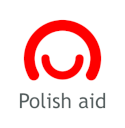Basic information about Poland

Republic of Poland (short form: Poland), Rzeczpospolita Polska (short form in Polish: Polska) is located in Central Europe. Poland borders Germany, the Czech Republic, Slovakia, Ukraine, Belarus, Lithuania and Russia (the Kaliningrad exclave). Its northern border (440 km long) runs along the Baltic Sea coast. Capital city is Warszawa (Warsaw: population 1.7 million / Warsaw agglomeration: 2.5 million). Population has approximately 37 million. Poland has the eigth-largest population in Europe, and the fifth-largest in the European Union.
Poland belongs to the Central European time zone (GMT + 1 hour / UTC + 1 hour), except for between the last Sunday in March and the last Sunday in October when it switches to daylight saving time. The Polish climate is moderate continental, with relatively cold winters (from December to March) and hot summers which extend from June to August.
The official language of Poland is Polish and the Złoty is the official currency. Złoty is subdivided into 100 groszy.
Poland is a parliamentary republic. The executive branch consists of the President as the head of state; the Prime Minister as the head of government and the Council of Ministers. All ministers are proposed by the Prime Minister, appointed by the President, and approved by the Sejm.
The legislative branch is a bicameral legislature consisting of the Sejm and the Senate. The Sejm has 460 seats; members are directly elected in multi-seat constituencies by proportional representation vote to serve 4-year terms. The Senate has 100 seats; members are directly elected in single-seat constituencies by simple majority vote to serve 4-year terms.
Administrative division of Poland
Poland is an unitary state. Warsaw is the largest city in Poland and the capital of the country. Other major cities are: Kraków, Łódź, Wrocław, Poznań, Gdańsk, Szczecin, Bydgoszcz, Lublin, Katowice, Białystok, Gdynia.
The territorial administrative structure of Poland is based on three levels of self-government. Poland is divided into:
- I level – Voivodeships (similar to provinces),
- II level – Powiats (similar to counties or districts),
- III level – Gminas (similar to communes or municipalities).
International cooperation
Poland is a member of the European Union (EU), the Schengen Area, North Atlantic Treaty Organisation (NATO), United Nations (UN), International Monetary Fund (IMF), United Nations Educational, Scientific and Cultural Organisation (UNESCO), United Nations International Children’s Emergency Fund (UNICEF), World Health Organisation (WHO), World Trade Organisation (WTO), Organisation for Cooperation and Development (OECD) and many others.
Interesting information about Poland you can find in the following websites:
Top places to see in Warsaw:
- Polish History Museum: http://muzhp.pl/en
- Warsaw Rising Museum: //www.1944.pl/en
- Muzeum of King Jan III'S Palace at Wilanów: https://www.wilanow-palac.pl/
- Royal Castle in Warsaw: https://www.zamek-krolewski.pl/en
- Royal Łazienki Museum: http://www.lazienki-krolewskie.pl/en/
- National Museum in Warsaw: http://www.mnw.art.pl/en/
- Fryderyk Chopin Museum in Warsaw: http://chopin.museum/en
- Museum of the History of Polish Jews: https://polin.pl/en
- Museum of Warsaw: https://muzeumwarszawy.pl/en/
Virtual tour of Warsaw:
- https://www.gpsmycity.com/gps-tour-guides/warsaw-514.html
- https://www.inyourpocket.com/warsaw/warsaw-virtual-tours_77640f
- https://warsawtour.pl/en/stay-home-discover-warsaw-online/
- https://www.youtube.com/watch?v=7YRyFvjA_a8
On-line guides (Warsaw):
Other cities:
- Poland cities overview:
- Cracow:
- Tricity:
- Poznań:
- Wrocław:




















